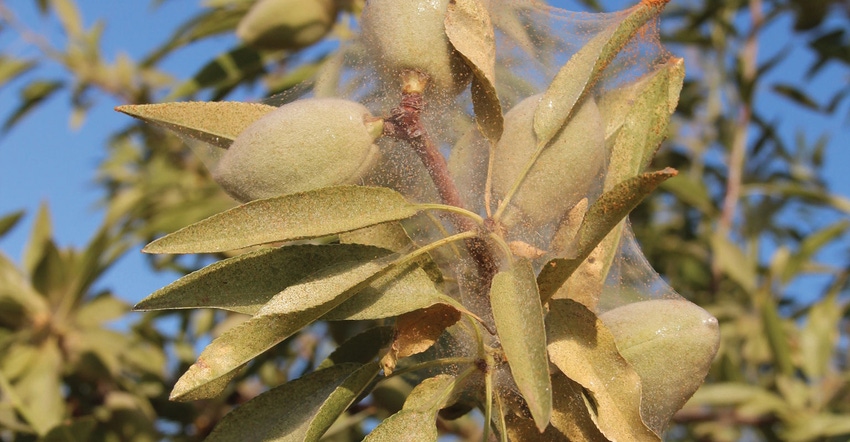
We’re in an age where bigger is no longer always stronger. For example, something small and powerful, in the form of a pandemic, laid siege to the. entire world. Also small and destructive are spider mites in almonds and this is the time of year when keen eyesight is needed in orchards.
“Spider mites have been fairly consistent in recent memory,” said David Haviland, UCCE Entomology Advisor, Kern County. “We don’t see many of them during June and early July in mature trees as bio-control typically eats them up --- and then, boom --- right around hull split, they’re they are.
“Sometimes there’s a need to treat, a lot of times there’s not,” he said. “Many growers do a second navel orangeworm spray about two weeks after split, typically in the second or third week of July, and between the two hull splits, the mites start to show up after that first wholesale spray.”
Haviland isn’t expecting things to be much different this year despite different conditions brought about by climate change that has produced water stress. With little natural precipitation and a greater reliance on groundwater comes a possible increase in irrigation salinity-induced water stress and therefore, more mite pressure.
“There’s reason to think there might be more mite pressure due to less irrigation or more salt in your water," he said. “The big impact is that people are going skinny on their water depending on its availability. It’s not the salinity part that’s of concern, it’s the factor of the minimal amount of water that could bring on stress.
“Nearly every orchard every year is put through a certain level of regulated deficit irrigation between hull split and harvest to help synchronize split and prevent hull rot, so even in a non-short water year, stressing trees is a fairly normal phenomenon — which is why mites typically show up every year, sometime within that last week or two before you start shaking Nonpareils.”
Expect more pressure
Putting all the factors together, “I think you can expect a normal, but maybe slightly-more-pressure- with-mites year, is what the crystal ball might be saying,” he said. “There’s no reason to think that the natural enemies will be any different than usual, so nobody should be panicking about mites, just stay the course in monitoring and spraying when required. That’s what integrated pest management is all about.”
Vigilance is called for with Haviland advocating observers monitor weekly for mites. “The official treatment threshold is approximately 40% of leaves infested. We recommend growers use a Predator trap, a yellow sticky trap to monitor for mites and their predators, especially six-spotted thrips, their biological control.
“If you catch three thrips in a trap in a week, your mite population will stay about the same. If you catch six in a week, there’s no need to make any treatments. But even if you don’t see any thrips and upwards of 40% of your leaves have become infested, a miticide is needed at first hull split.”
Mite population numbers are impressive, albeit in a negative way, as reproduction is rapid during warm weather months between June and September. During favorable conditions, mites develop within a week with as many as ten generations per season.
An Almond Mite Control Decision Tree is available at https://bit.ly/3jd8FPS.
About the Author(s)
You May Also Like




